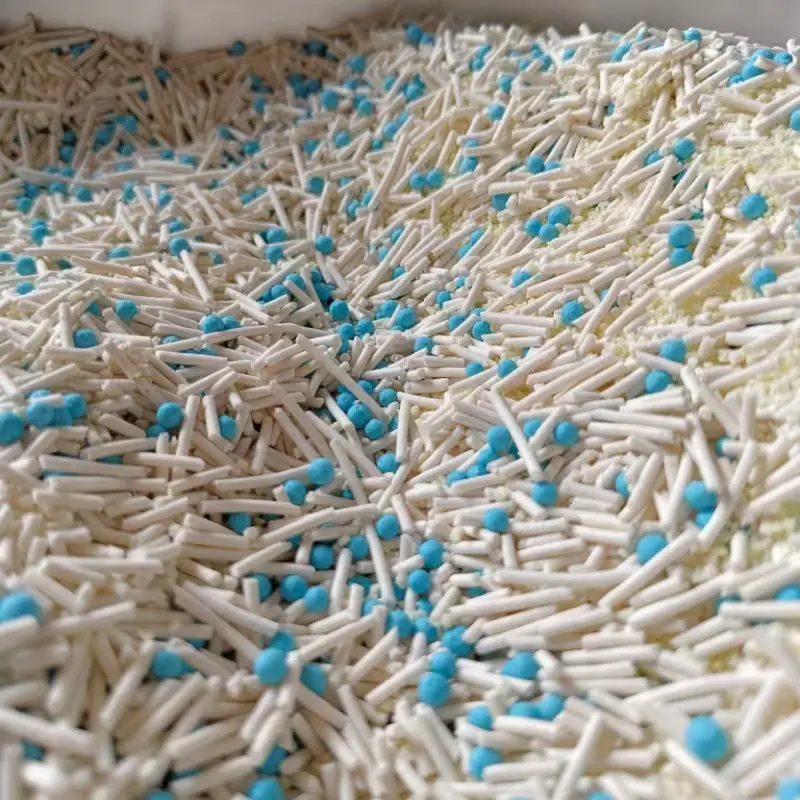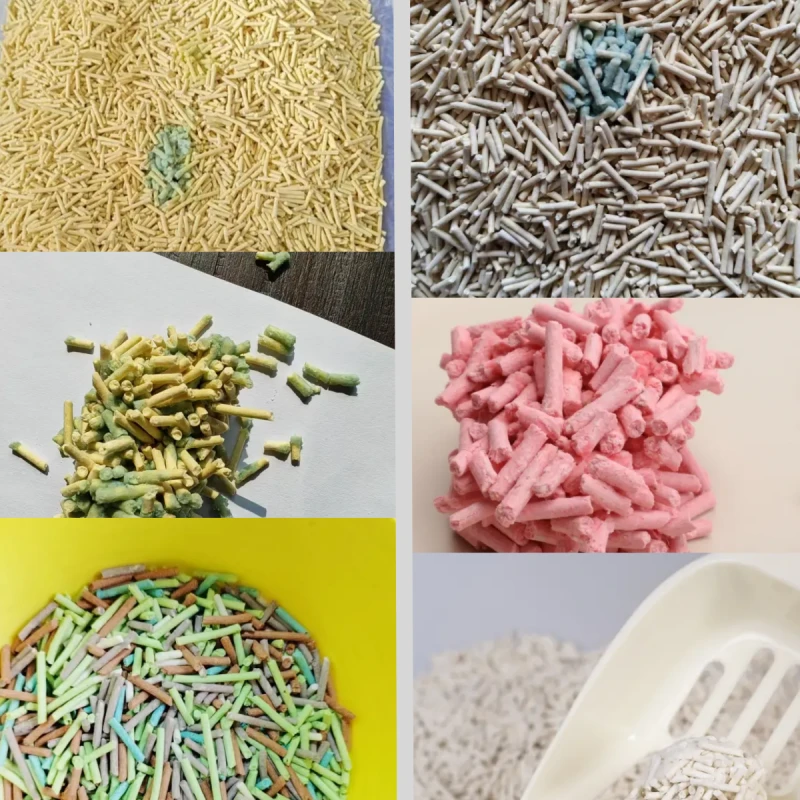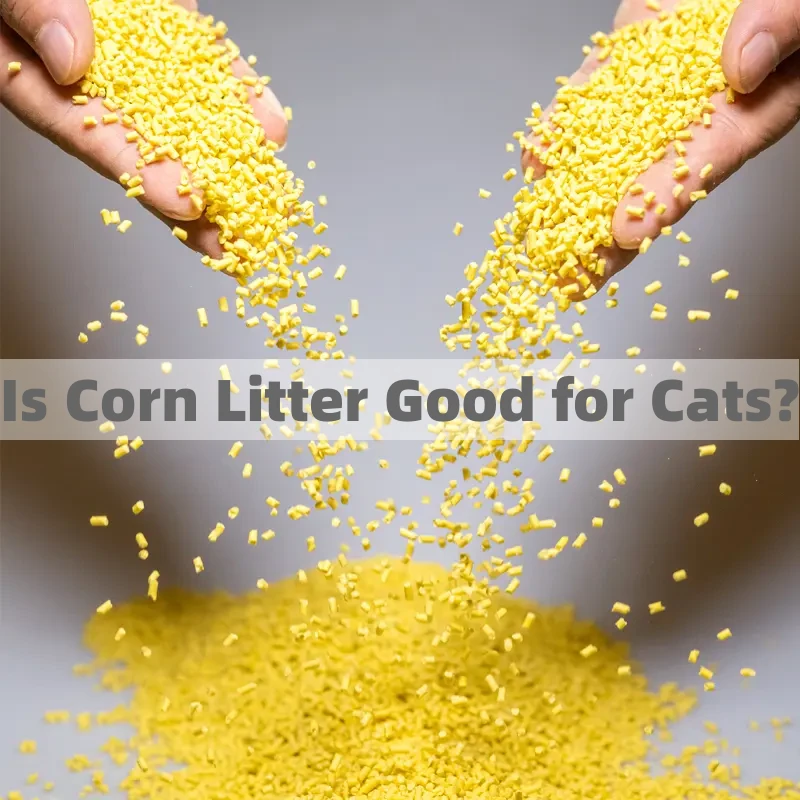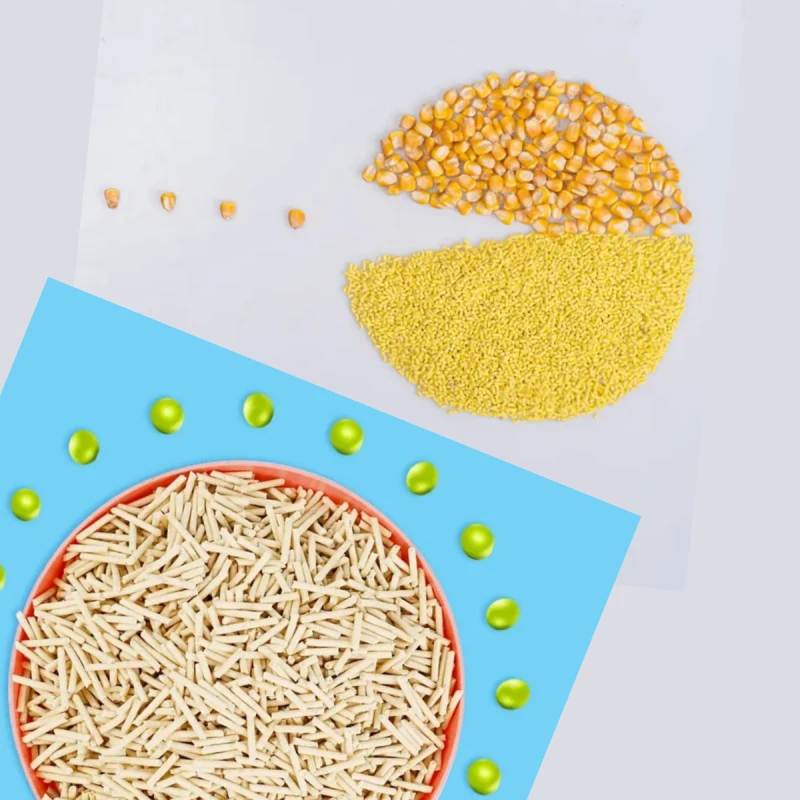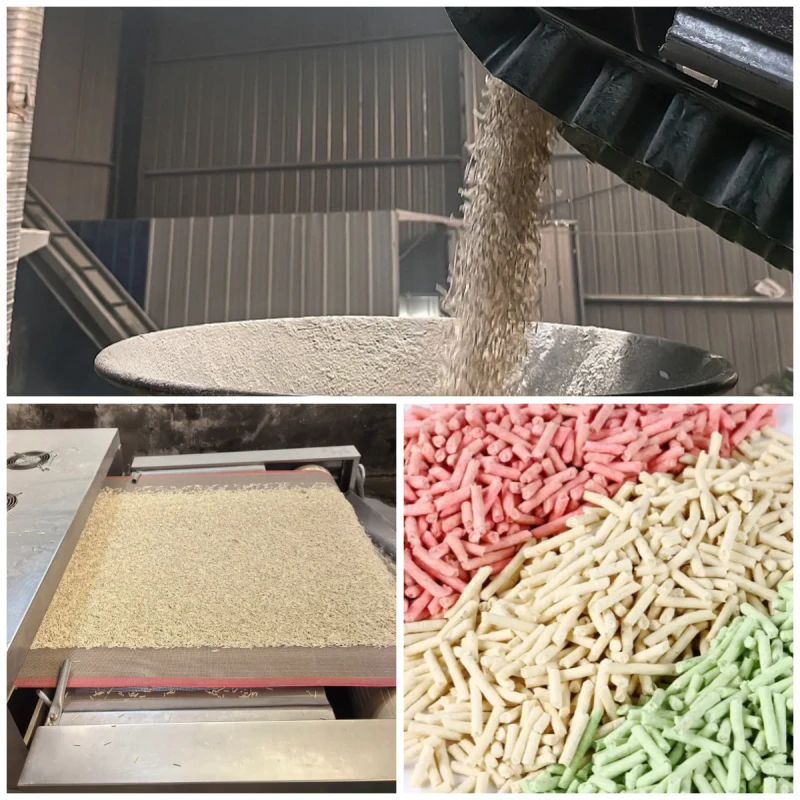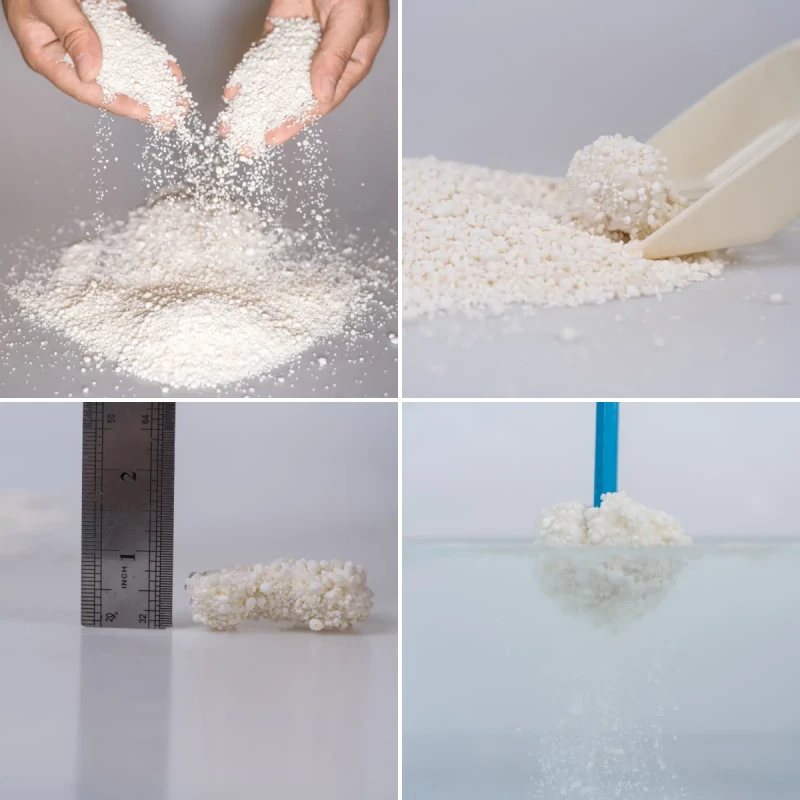Pros of Clumping Litter:
Clumping Ability:
Clumping litter forms solid clumps when it comes into contact with moisture, such as urine. This makes it easier to scoop out soiled areas, leaving the rest of the litter box clean.
Odor Control:
Clumping litters are often effective at controlling odors because they encapsulate moisture and waste, sealing in unpleasant smells. Some plant-based cat litter used some sustainable materials to help to eliminate the odors and the effect is obvious.
Efficient Cleaning:
The clumping action allows for more efficient and thorough cleaning of the litter box, as you only remove the clumps, leaving the remaining clean litter in place.
Longevity:
Clumping litters can last longer between complete litter changes, as the clumps can be removed daily, leaving the rest of the litter box relatively fresh.
Variety:
Clumping litters come in a variety of materials, such as clay, natural ingredients like tofu,corn or wheat, allowing you to choose the one that best suits your preferences and your cat's needs.
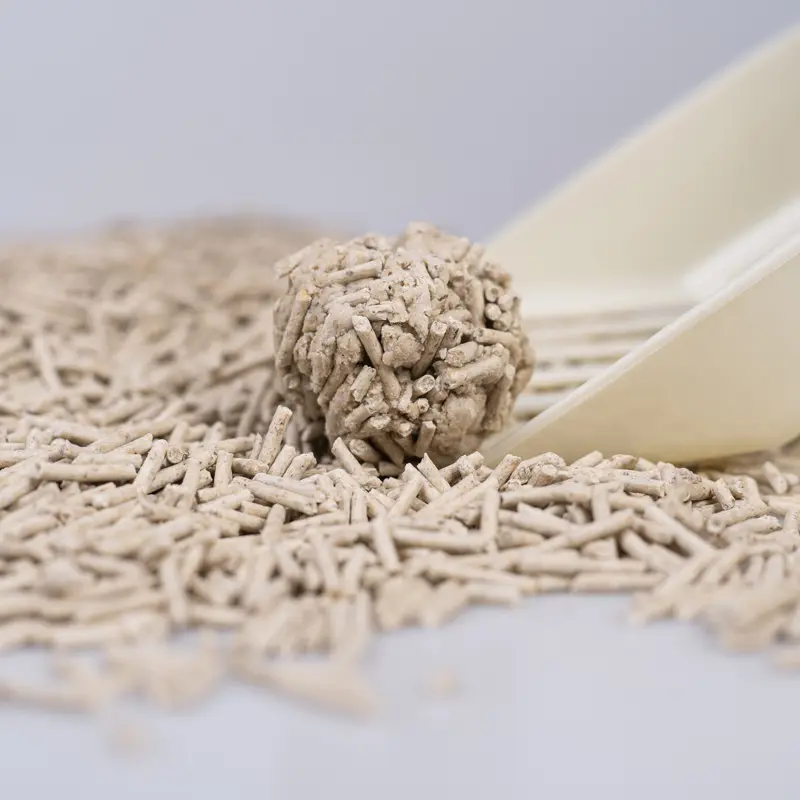
"From this picture,the clumping cat litter can clump hard, it will be easy to be scooped out from litter box, and the clumps can cover the odor well to make your house fresh"
Cons of Clumping Litter:
Tracking:
Some clumping litters can be finer and lighter, leading to tracking, as your cat may carry particles out of the litter box.
Dust:
Dust can be a concern with certain clumping litters, potentially affecting cats with respiratory sensitivities and creating a dusty environment in your home.
Pros of Non-Clumping Litter:
Simplicity:
Non-clumping litters are straight forward to use. They are typically made from materials like clay, crystals, recycled paper, or wood pellets.
Low Tracking:
Non-clumping litters are less likely to track outside the litter box because they have larger and heavier granules or pellets.
Low Dust:
They are generally low in dust, making them a good choice for cats and owners with respiratory sensitivities.
Cost-Effective:
Non-clumping litters are often more budget-friendly than clumping litters, making them an economical choice.
Cons of Non-Clumping Litter:
Odor Control:
Non-clumping litters may not be as effective at controlling odors because they do not form clumps to seal in moisture and waste.
Regular Replacement:
You may need to change the entire box of non-clumping litter more frequently than with clumping litters, as the waste mixes with clean litter over time.
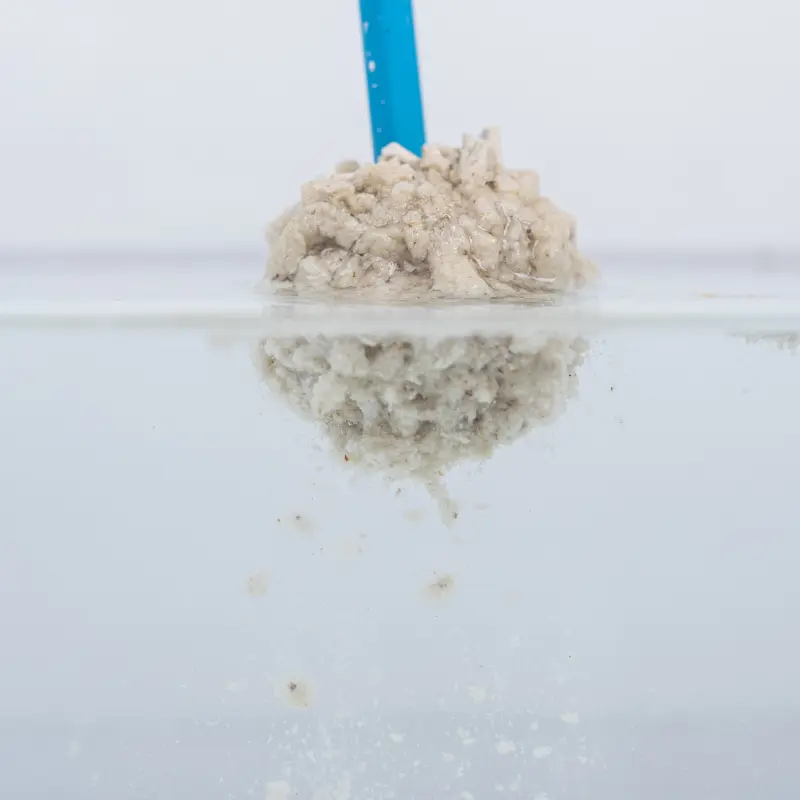
"This picture showed that the plant-based cat litter can be dissovled into water very quickly,so it can be flushed into your toilet and no extra work to dispose."
In conclusion, the choice between clumping and non-clumping cat litter depends on your cat's preferences, your cleaning routine, and your priorities. Clumping litters are popular for their convenience and odor control, while non-clumping litters may be preferred for their simplicity and cost-effectiveness. It's essential to consider your cat's comfort and your own needs when selecting the right litter for your household.But as long as people's environmental concept is becoming stronger, the clumping plant-based cat litter are welcomed in many areas.So if you want to develop a new plant-based cat litter,please contact with our sale dept. and we have a full range of products for your selection.
Choosing the right type of cat litter is important for pet owners, as it impacts not only the cleanliness of the litter box but also the ease of maintenance and comfort for the cat. Clumping litter and non-clumping litter are the two primary types, each offering distinct advantages and features. This comparison explores their differences in terms of specifications, uses, performance, and price to help you make an informed decision.
Specifications Comparison
| Specification | Clumping Litter | Non-Clumping Litter |
|---|---|---|
| Material | Bentonite clay, silica gel, or plant-based materials | Clay, silica gel, recycled paper, pine, or wood shavings |
| Particle Size | Fine to medium granules | Medium to large granules |
| Dust Levels | Low to medium (dust-free options available) | Higher dust levels, especially with clay varieties |
| Absorption Rate | High (absorbs liquid quickly, forming solid clumps) | Moderate to high (absorbs liquid but does not clump) |
| Odor Control | Strong due to clumping and quick waste removal | Moderate, may require frequent changes for freshness |
| Biodegradable Options | Yes, available in plant-based varieties | Yes, especially with wood, paper, or natural fibers |
| Weight | Heavier due to clumping material | Lighter, especially in pellet or wood-based forms |
| Flushable Options | Yes, for some plant-based types | Limited; most varieties are not flushable |
Uses Comparison
| Use Case | Clumping Litter | Non-Clumping Litter |
|---|---|---|
| Daily Cleaning | Ideal for daily scooping as clumps can be removed easily | Requires full change more often, as liquids spread |
| Multi-Cat Households | Suitable due to ease of cleaning and better odor control | Not recommended unless changed frequently |
| Long-Term Use | Needs regular topping up to maintain volume after scooping | Requires a complete change of litter more frequently |
| Sensitive Cats | Some dust-free varieties are good for cats with allergies | Best for kittens or cats that dislike granular textures |
| Eco-Friendly Needs | Biodegradable options available (corn, wheat, coconut) | Plant-based or recycled paper types offer greener choices |
| Heavy Use Areas | Good for high-traffic litter boxes due to clumping action | Less suited for heavy use as it can become saturated faster |
Performance Comparison
| Performance Metric | Clumping Litter | Non-Clumping Litter |
|---|---|---|
| Absorption Efficiency | Absorbs moisture quickly, forming solid, scoopable clumps | Absorbs moisture but does not contain it as well, leading to pooling |
| Odor Control | Traps odor in clumps, making it easier to remove smells | Absorbs some odors but can become smelly if not changed frequently |
| Ease of Cleaning | Very easy to clean as clumps can be removed daily | Requires complete litter change to maintain freshness |
| Tracking | Tends to track outside the box due to finer particles | Less tracking, especially with larger pellets or paper-based types |
| Longevity | Can last longer with regular scooping and adding fresh litter | Requires more frequent full replacements, especially with clay |
| Dust Levels | Some types can produce dust, especially during pouring | Can be dustier, depending on the material (e.g., clay) |
Price Comparison
| Litter Type | Price Range (per pound/kg) | Frequency of Purchase | Estimated Monthly Cost |
|---|---|---|---|
| Clumping Litter | $0.60 - $1.50 per pound (or $1.30 - $3.30 per kg) | Purchased less often due to long-lasting clumping action | $15 - $30 for a 20 lb (9 kg) bag |
| Non-Clumping Litter | $0.40 - $1.20 per pound (or $0.90 - $2.60 per kg) | Requires more frequent replacement | $10 - $25 for a 20 lb (9 kg) bag |
| Eco-Friendly Clumping | $1.00 - $2.50 per pound (or $2.20 - $5.50 per kg) | Lasts longer, but more expensive upfront | $20 - $40 per month, depending on use |
| Eco-Friendly Non-Clumping | $0.80 - $1.80 per pound (or $1.80 - $4.00 per kg) | Frequent changes needed for odor control | $15 - $35 per month |
Note: Prices vary depending on brands, availability, and location. Bulk purchases can often result in lower per-pound costs.
Conclusion: Which Is Better?
Clumping Litter: Best for those who prefer daily cleaning with less frequent full changes. It provides superior odor control, making it ideal for homes with multiple cats. While it may be slightly more expensive initially, the ease of maintenance and longer lifespan can offset costs over time. Clumping litter is particularly suitable for pet owners who want a more hands-off experience between full litter box cleanings.
Non-Clumping Litter: Works well for kittens, cats sensitive to certain textures, or those who prefer a simpler, lower-cost option. It’s ideal for situations where a complete change is preferred over daily maintenance. While it may need more frequent replacement to control odors, it’s a good choice for those who want a lightweight and sometimes more natural option.
The choice between clumping litter and non-clumping litter depends on the specific needs of the pet and the preferences of the owner. For most, clumping litter offers better convenience and long-term value, while non-clumping varieties can be a budget-friendly and simpler solution for lighter use.

387.webp)
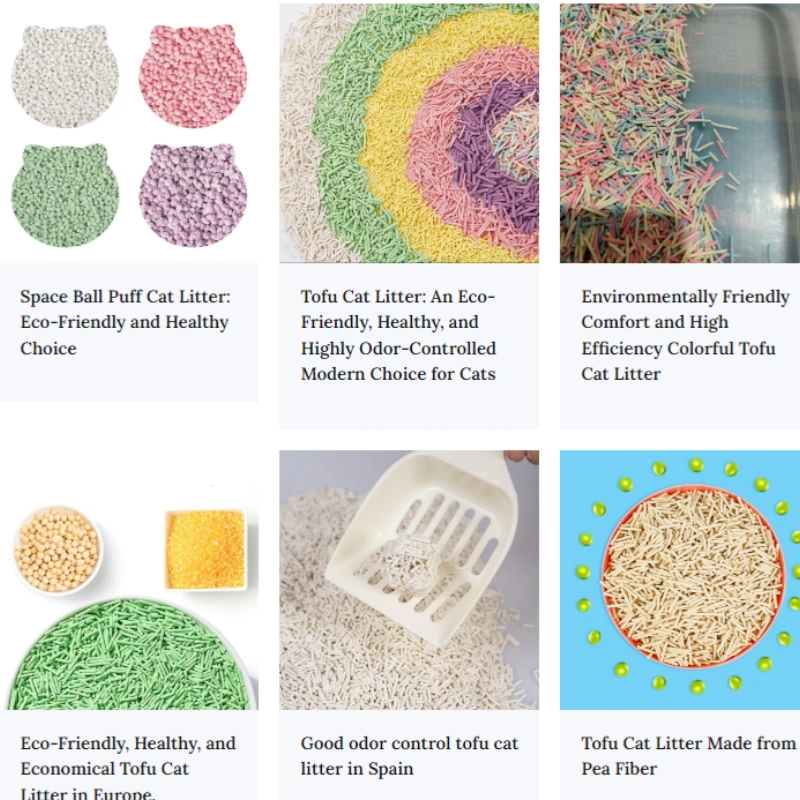
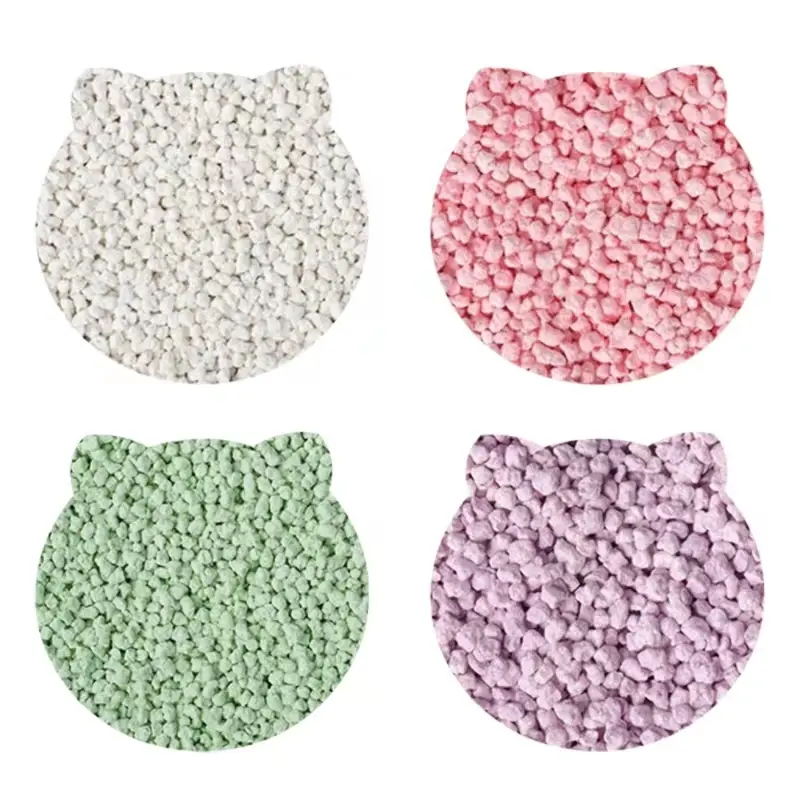
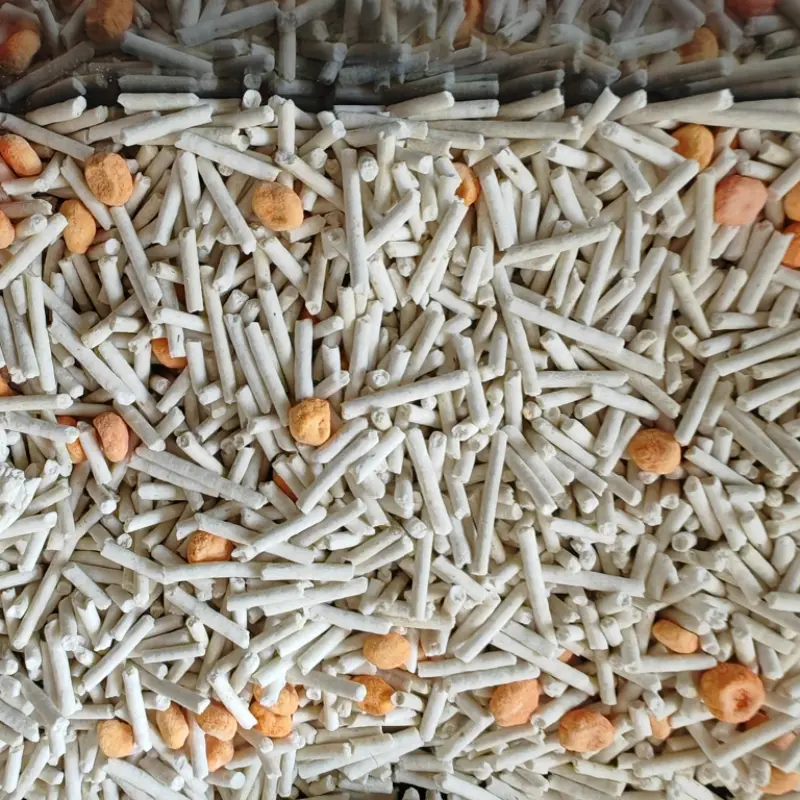
122.webp)
